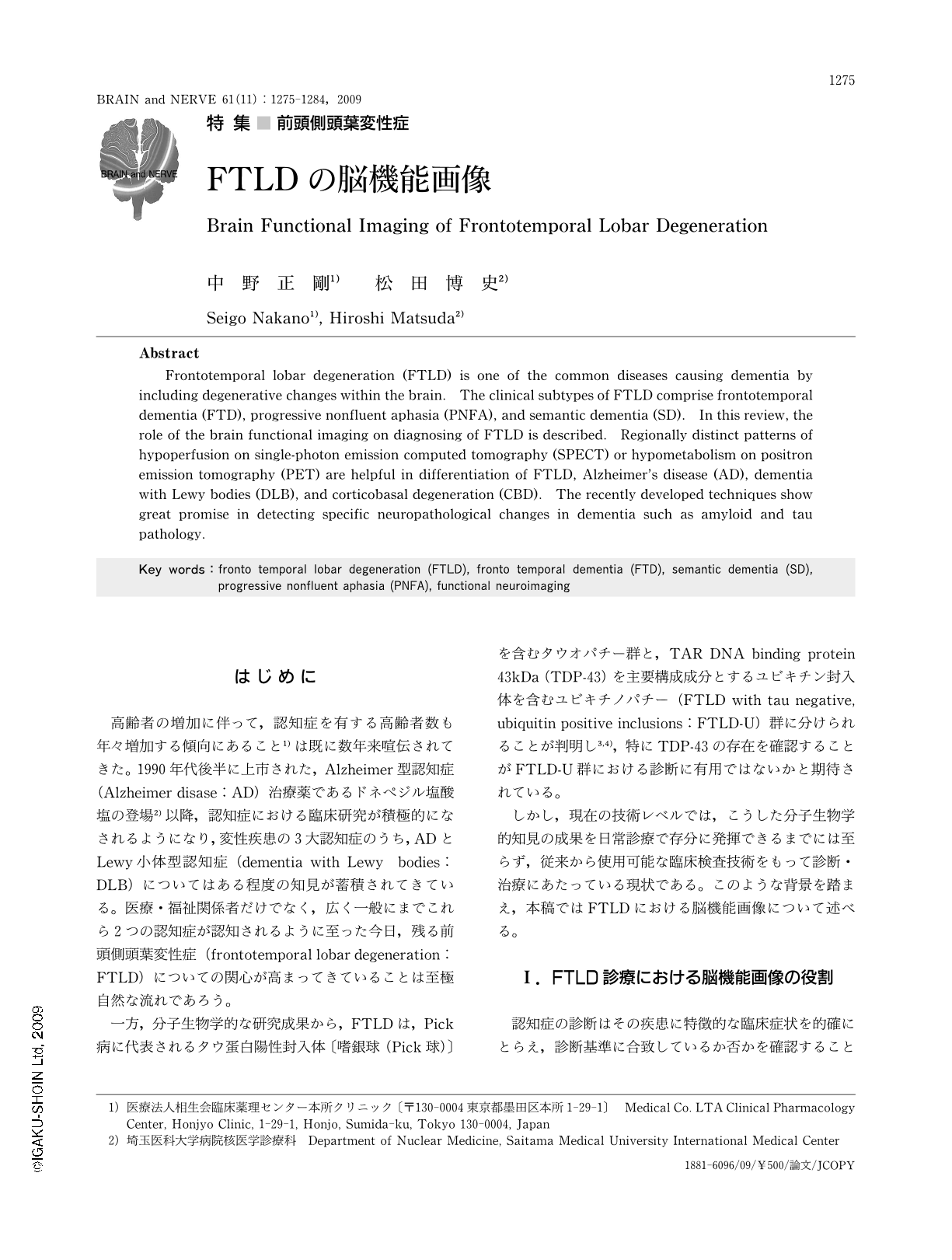Japanese
English
- 有料閲覧
- Abstract 文献概要
- 1ページ目 Look Inside
- 参考文献 Reference
はじめに
高齢者の増加に伴って,認知症を有する高齢者数も年々増加する傾向にあること1)は既に数年来喧伝されてきた。1990年代後半に上市された,Alzheimer型認知症(Alzheimer disase:AD)治療薬であるドネペジル塩酸塩の登場2)以降,認知症における臨床研究が積極的になされるようになり,変性疾患の3大認知症のうち,ADとLewy小体型認知症(dementia with Lewy bodies:DLB)についてはある程度の知見が蓄積されてきている。医療・福祉関係者だけでなく,広く一般にまでこれら2つの認知症が認知されるように至った今日,残る前頭側頭葉変性症(frontotemporal lobar degeneration:FTLD)についての関心が高まってきていることは至極自然な流れであろう。
一方,分子生物学的な研究成果から,FTLDは,Pick病に代表されるタウ蛋白陽性封入体〔嗜銀球(Pick球)〕を含むタウオパチー群と,TAR DNA binding protein 43kDa(TDP-43)を主要構成成分とするユビキチン封入体を含むユビキチノパチー(FTLD with tau negative, ubiquitin positive inclusions:FTLD-U)群に分けられることが判明し3,4),特にTDP-43の存在を確認することがFTLD-U群における診断に有用ではないかと期待されている。
しかし,現在の技術レベルでは,こうした分子生物学的知見の成果を日常診療で存分に発揮できるまでには至らず,従来から使用可能な臨床検査技術をもって診断・治療にあたっている現状である。このような背景を踏まえ,本稿ではFTLDにおける脳機能画像について述べる。
Abstract
Frontotemporal lobar degeneration (FTLD) is one of the common diseases causing dementia by including degenerative changes within the brain. The clinical subtypes of FTLD comprise frontotemporal dementia (FTD),progressive nonfluent aphasia (PNFA),and semantic dementia (SD). In this review,the role of the brain functional imaging on diagnosing of FTLD is described. Regionally distinct patterns of hypoperfusion on single-photon emission computed tomography (SPECT) or hypometabolism on positron emission tomography (PET) are helpful in differentiation of FTLD,Alzheimer's disease (AD),dementia with Lewy bodies (DLB),and corticobasal degeneration (CBD). The recently developed techniques show great promise in detecting specific neuropathological changes in dementia such as amyloid and tau pathology.

Copyright © 2009, Igaku-Shoin Ltd. All rights reserved.


